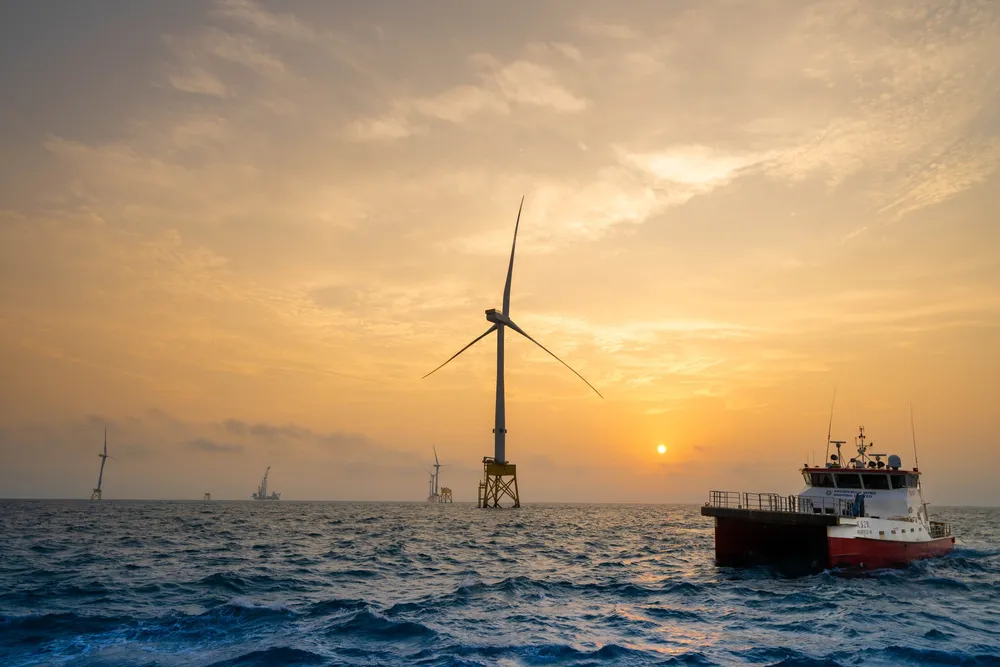Stalled offshore wind giant back in the race
EDF deal with Taiwan government-backed offtaker aimed at propelling becalmed industry towards 15GW goal

French developer EDF confirmed it has signed the first corporate power purchase agreement (CPPA) with a recently formed government-backed offtaker for its Wei Lan Hai Changhua project.
The 440MW project was awarded in 2022 in the first phase of the nation’s subsidy-free Round 3 tender that has largely stalled as few corporations were willing to pay for costly clean energy amid surging costs.
EDF signed the 30-year contract with Taiwan Smart Electricity & Energy (TSEE), an aggregator for offshore wind procurement formed last year by government monopoly electricity provider Taiwan Power Company (Taipower) and six other major industrial firms, many of them likewise state-backed.
“This milestone agreement marks EDF power solutions’ first CPPA for offshore wind in Taiwan,” EDF said in a statement.
“Wei Lan Hai Changhua Offshore Wind Project will contribute to Taiwan’s energy independence objective and support its low carbon energy transition including the 10.8GW target of offshore wind installed capacities by 2030,” EDF added.
EDF owns 80% of the project, with local manufacturer Taiya holding the remaining portion.
With some 3GW in operation and more than 1GW awaiting commissioning, Taiwan trails only China, the UK, Germany and the Netherlands in offshore wind capacity.
This existing and in-construction capacity was awarded in the nation’s first two rounds that enjoyed lucrative Feed-in-Tariff (FiT) support mechanisms and lower local content mandates.
Industry momentum lurched to a standstill following the end of the FiT scheme and imposition of the world’s strictest local content policies that have raised costs beyond what the local corporate market could tolerate.
For the move from state support to corporate offtake, “the timing proved to be off, as there are still major challenges to directly sell into the market in Taiwan,” said Raoul Kubitschek, head of renewable energy research consultancy Niras in Taiwan.
Only two of seven projects awarded in the 3GW first phase of the round – Round 3.1 – have advanced, including Copenhagen Infrastructure Partners (CIP)’s 500MW Fengmiao 1 and the 495MW Formosa 4, owned by local developer Synera Renewable Energy and partners.
Three projects quickly dropped out, reducing the total round to 2.3GW, while the remaining projects have been in a state of limbo.
Round 3.2, which saw another 2.1GW awarded last year, is equally moribund.
Taiwan is home to many largescale international manufacturers, most prominently TSMC, which manufactures some 60% of the global share of advanced semiconductors.
TSMC and other heavyweights are only about half the potential market, with the remainder small and medium-sized enterprises (SMEs) that face “challenges in obtaining international credit ratings… [making them] unable to purchase offshore wind electricity,” EDF noted.
While TSEE is dominated by state firms, it “will also sell shares to private industry with a need to procure renewable energy to raise capital,” Kubitschek observed.
Taiwan is looking to add over 9GW in its Round 3 for a cumulative 15GW by 2035, and “developers will still need to find more private offtakers to make their projects viable,” Kubitschek said.
(Copyright)